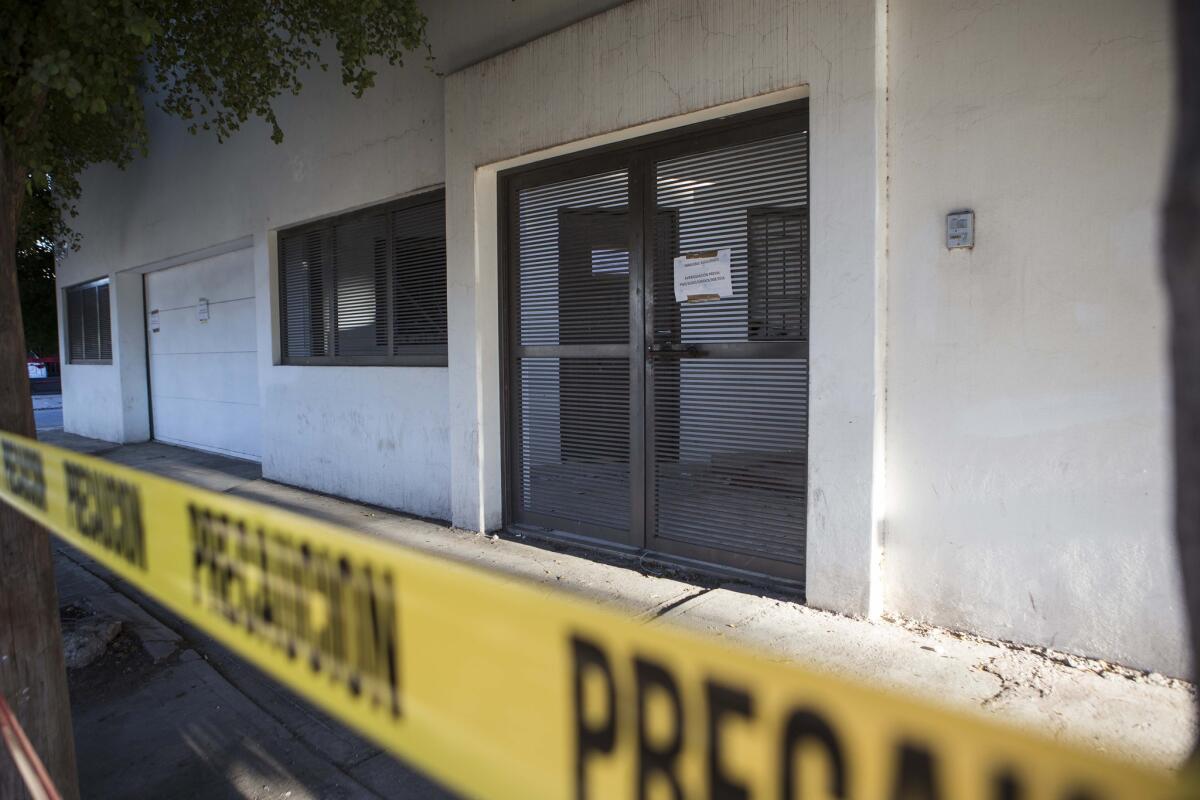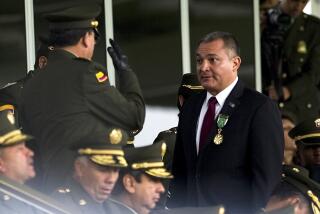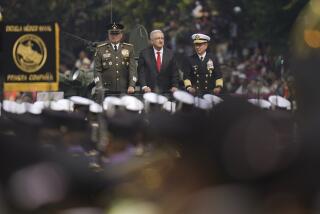‘El Chapo’ could have fled to another continent, but he chose to go home

Police tape surrounds the entrance of the home where marines engaged in a gun battle during the search for Mexican drug lord Joaquin “El Chapo” Guzman, in Los Mochis, Mexico, Sunday, Jan. 10, 2016.
Reporting from Los Mochis, Mexico — He had billions of dollars, a fleet of aircraft at his disposal and an endless supply of resources. Yet, of all the places in the world where he could have chosen to run to and hide, Joaquin Guzman chose to go home.
The drug kingpin known as “El Chapo” felt safe in Sinaloa. He had paid off local officials and military commanders and knew he would be tipped off if federal authorities came looking for him. Many residents admired and would protect him. He was one of their own.
“He could have gone to Argentina, to Europe,” said Anabel Hernandez, author of several books on Mexico’s drug cartels and the government corruption that protects them. “He was where he felt safe. Where he felt untouchable.”
Except that he wasn’t.
The tip that led to Guzman’s capture by the Mexican military Friday came from a neighbor reporting suspicious activity at the house where the fugitive drug lord was hiding, a former senior U.S. drug official said Sunday.
Although questions have been raised about whether electronic contacts between Guzman and actors Sean Penn and Kate del Castillo could have led police to his hide-out, it was that simple tip-off that led to Friday’s arrest, according to Mike Vigil, a high-level Drug Enforcement Administration official in Mexico for 13 years who has been in contact with Mexican authorities conducting the investigation.
Guzman had been on the lam since July, when he carried out one of the most spectacular prison escapes on record. Shimmying down a hole in his cell’s shower, he dropped into a tunnel that had been engineered and built for him. He then zipped along on a rail-mounted motorcycle to an airfield and a waiting plane.
He was nearly caught in October, when Mexico’s military carried out a massive raid on more than a dozen villages in Durango and Sinaloa states.
A source in the office of Mexican Atty. Gen. Arely Gomez said it was Penn and Del Castillo to whom she was referring when she said Saturday that Guzman’s communications with “actors and producers” had “formed a new line of investigation” into Guzman’s whereabouts.
She said authorities were able to track the drug lord’s meetings with lawyers and other associates and identify his whereabouts in October — apparently close to the time that he met with Penn and Del Castillo in a mountainous jungle redoubt.
Gomez said the raid nearly resulted in Guzman’s arrest, but troops, seeing him accompanied by two women and a child, decided not to engage.
Since then, Guzman had apparently ended up in Los Mochis, a town just inland from the Gulf of California. In a video interview conducted remotely with Penn, he could be seen sitting in the sun in a rural setting, roosters crowing in the background. It was a comfortable setting for a man who grew up on a farm.
But last week, neighbors had noticed the movement of high-caliber, military-style weapons and people they described as suspicious traveling in two armored cars in a lower-middle-class neighborhood in Los Mochis, said Vigil, who was the DEA’s chief of international operations before retiring.
That appears to have been Guzman’s undoing.
Mexican navy officials have confirmed that it was a neighbor’s tip that led to identifying Guzman’s location, but neither they nor U.S. officials discussed it publicly in more detail. Vigil’s account was based on conversations with those closely tied to the investigation.
According to his sources, electronic surveillance of Penn at Guzman’s hideaway, at least after he arrived in Mexico, was not what led Mexican authorities to discover the kingpin’s whereabouts.
“The meeting with Penn in October occurred in the mountainous region of Sinaloa state where there was no cellphone coverage, so they weren’t tracking him there,” Vigil said, citing information from sources in the Mexican government. “But the Mexican marines knew he was up there and put a saturation operation in effect which restricted his room to maneuver and hide.”
The increased presence of Mexican armed forces in the mountainous area that also included parts of Chihuahua and Durango was a result of pressure on Mexican President Enrique Peña Nieto to recapture the drug lord.
“Peña Nieto was desperate to regain credibility that he had lost not only because [Guzman] escaped, but the disappearance of the 43 students kidnapped and probably killed in Guerrero state had gone unsolved,” Vigil said.
After the Penn meeting, and after the armed forces commandeered many mountain roads and checkpoints and started conducting searches of houses throughout the region, Guzman’s habit of moving every couple of days became much riskier, Vigil said Mexican officials told him.
Guzman apparently decided then to take the risky step of relocating to Los Mochis, despite the higher risk of being recognized and being reported to the government.

Joaquin “El Chapo” Guzman, one of the world’s most powerful drug kingpins, gained folklore status during his decade-plus on the lam, evading authorities thanks to his skill at building secret tunnels from his assorted mountain hideouts, urban safe h
The actual capture occurred after Guzman escaped from the house and authorities pursued him along a highway, he said. The fugitive was captured after an eight-minute gunfight that left five of his bodyguards dead.
According to Vigil, Guzman’s partner in the Sinaloa cartel, Ismael Zambada, is capable of running the multibillion-dollar business in the senior drug lord’s absence. Mexican officials discount the possibility that Guzman’s sons could take over.
“All they are good for is spending their dad’s money,” Vigil said, repeating what Mexican officials have told him.
Several years ago, Guzman — then a fugitive — held a large wedding party in the Sinaloa hills, with officials in attendance. He was marrying a young beauty queen, with whom he later had twin girls. Again, he knew he would be safe. And that time, he was.
This time, his capture could lead to his extradition to the United States, where his chances of another escape — it would be his third — would seem to be remote. Still, in Sinaloa, the people who feel kinship with Guzman appear confident that he will be back.
“Neither [Mexican President] Peña Nieto nor the Americans should get very excited,” said Jesus Guerra, a 52-year-old newspaper vendor. “The gentleman will escape again, of that I am sure.”
Special correspondents Sanchez and Kraul reported from Los Mochis and Bogota, Colombia, respectively. Times staff writer Wilkinson reported from Washington.
Follow @ChrisKraul on Twitter
MORE ON “EL CHAPO”
White House questions Sean Penn role in drug kingpin case
Did Sean Penn do anything wrong in meeting with fugitive Joaquin ‘El Chapo’ Guzman?
Actress involved in Sean Penn-’El Chapo’ meeting is known for social activism
More to Read
Sign up for Essential California
The most important California stories and recommendations in your inbox every morning.
You may occasionally receive promotional content from the Los Angeles Times.











